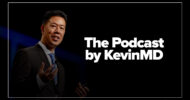Risk adjustment is a statistical method used by health plans to predict an individual’s use of health care services and the associated cost of care. Unlike traditional fee-for-service Medicare, Medicare Advantage (MA) plans receive a flat monthly payment for the individual beneficiary’s cost of care, with payments partially based on risk score.
Higher risk scores mean higher payments, and plans have financial incentives linked to more thorough documentation (coding) of their beneficiaries’ diagnoses. This “coding intensity” has escalated to the point where CMS now imposes a 5.9 percent reduction to MA risk scores to counter the effect. And the Medicare Payment Advisory Commission is pushing to rein in excess payments to MA plans.
Meanwhile, the Department of Justice is paying attention to the situation and taking action against MA plans that artificially inflate MA payments. In 2020, the commission found MA risk scores were about 9.5 percent higher than those for comparable beneficiaries in traditional Medicare because of coding intensity.
Too much focus on coding
Lately, the industry has been abuzz with talk about how providers and health plans can optimize risk-adjusted MA payments and the associated “upcoding” to qualify for higher risk scores.
This is not a matter of simply picking a code and being done with it. Clinical documentation must support the selected diagnosis and show that the condition was appropriately assessed and treated. In other words, a more specific code is not enough when the auditors come calling.
The growing reliance on “optimized” coding raises a core question about what providers’ (and payers’) primary concern should be: Is it about the coding (and payment), or is it about the caring?
Any examination of this issue must consider the role of the EHR in all of this. While with a patient at the point of care, the clinician must search through volumes of disjointed data. With so much disorganized data, is it any wonder that clinicians struggle to find relevant history about their patients’ existing or suspected problems?
Ultimately, the EHR is little more than an inert repository of information that does more to justify diagnoses and billing than it does to empower clinicians to improve patient care.
We’ve been focused on solving the wrong problem for too long. Far too much attention is paid to the codes. Getting the code right. Getting the next code. Managing codes. Managing lists of codes. Managing the updates of codes.
Instead, the focus should be on helping the clinician manage the patient.
What if the EHR was not just a clinically inert obligation? What if they could be converted into diagnostically interactive tools that provide clinicians with at-a-glance access to all clinical information related to a patient’s problem and address the quality measures and documentation requirements with customized workflows? That would empower the clinician to improve care.
Because it’s not about the coding. It’s about the caring.
With the growth of MA and other risk-based incentive programs and the increased focus on pay-for-performance and quality, providers are increasingly charged with moving the needle on patient care. Having the right code might help with getting paid, but it won’t move the care needle.
With the shift to value-based care models, it will be more important than ever to give clinicians a diagnostically focused view for each patient and each of their medical problems. Clinicians need these details instantly, without having to randomly search through unrelated sections of the clinically inert EHR.
By empowering clinicians in this way, the EHR can become more than a static repository for an ever-increasing collection of codes. It will evolve into a true diagnostically interactive tool for care.
Jay Anders is a physician executive.
Image credit: Shutterstock.com





















![Sustainable legislative reform outweighs temporary discount programs [PODCAST]](https://kevinmd.com/wp-content/uploads/The-Podcast-by-KevinMD-WideScreen-3000-px-4-190x100.jpg)

![Catching type 1 diabetes before it becomes life-threatening [PODCAST]](https://kevinmd.com/wp-content/uploads/Design-2-190x100.jpg)

